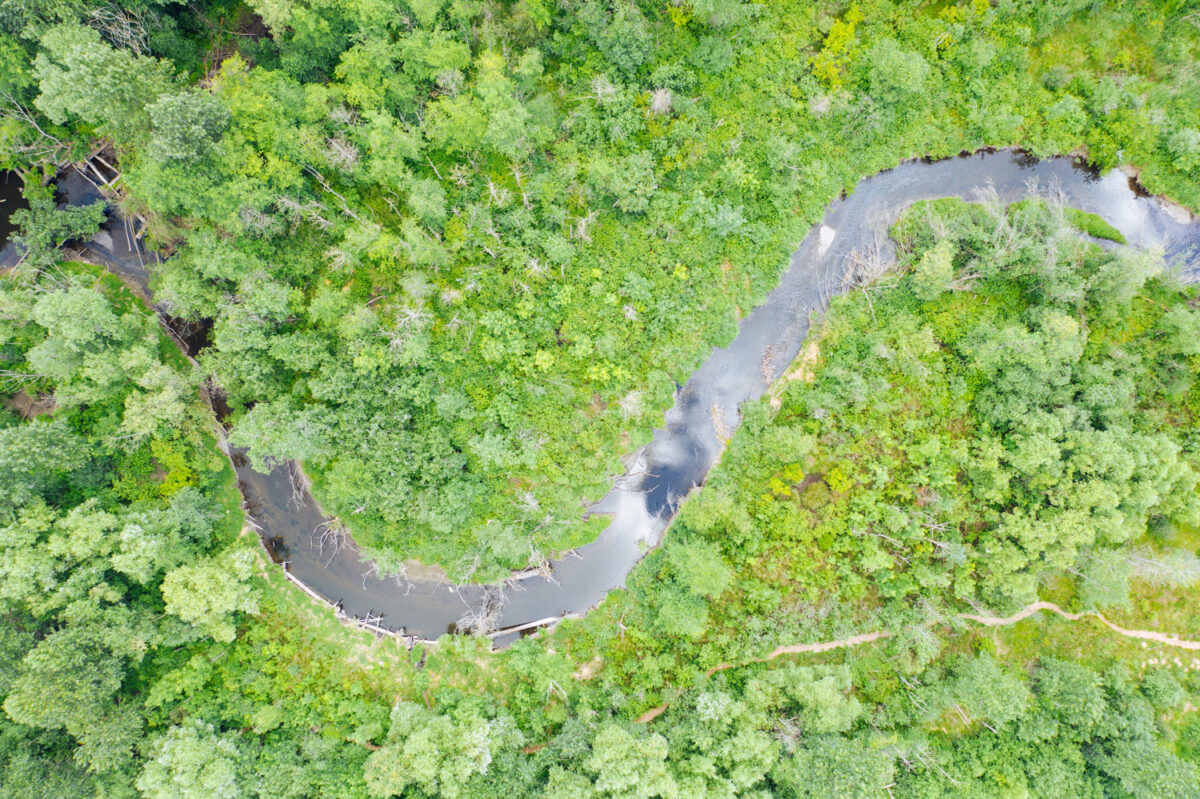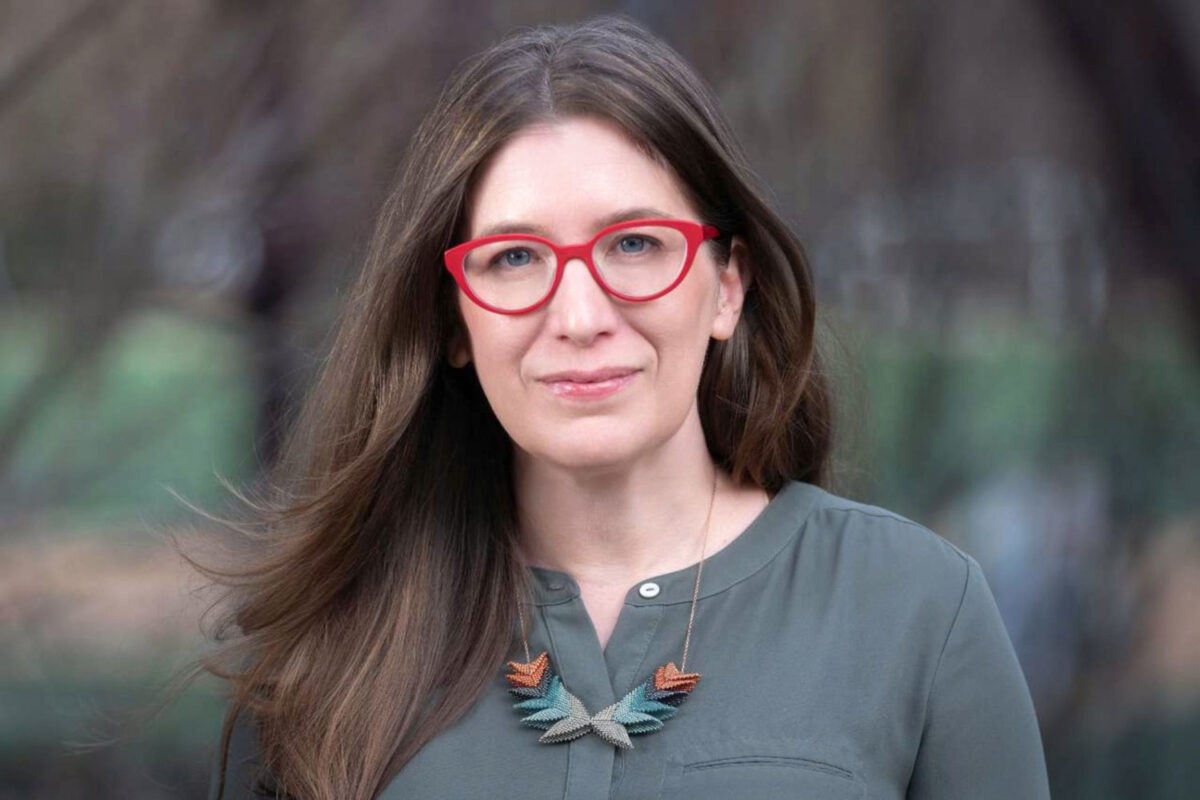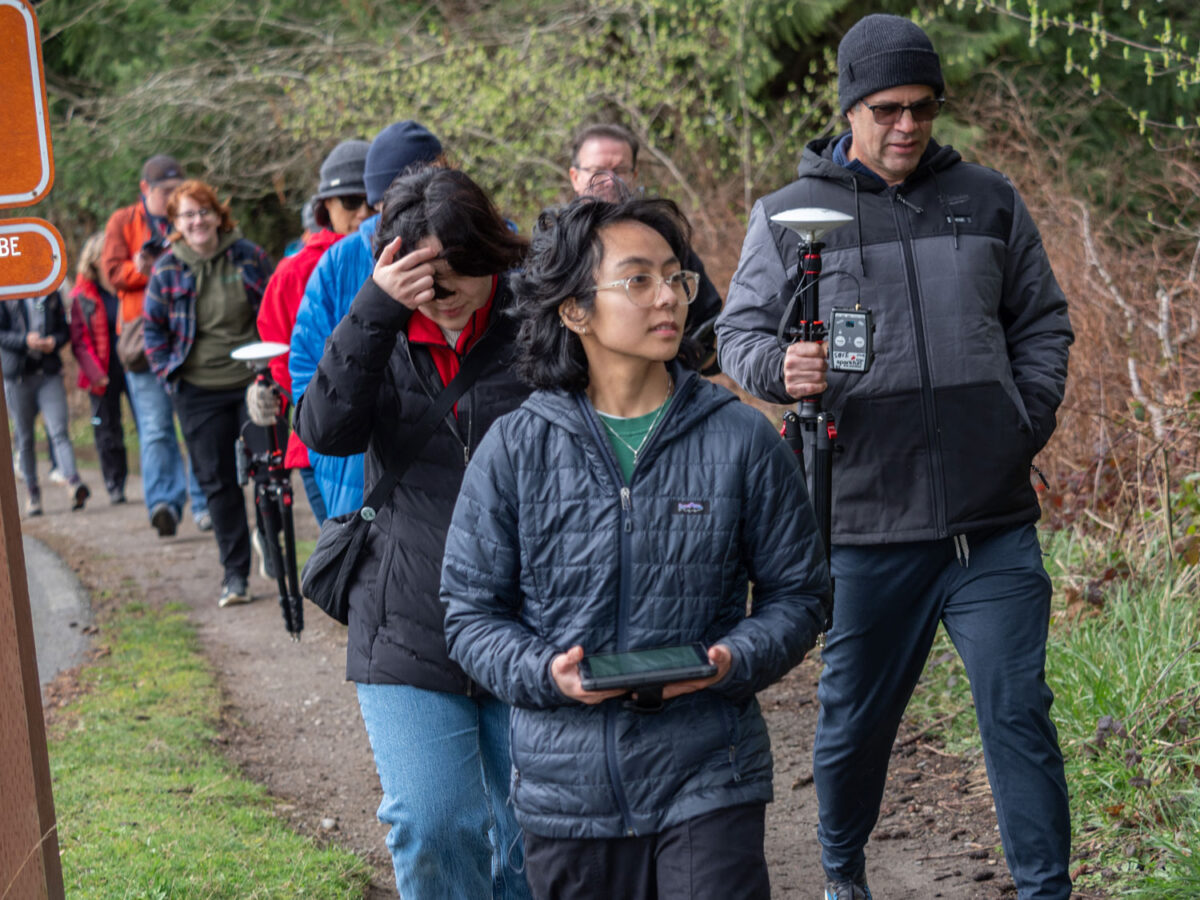Earth Month is a time to celebrate the planet and all it provides — but also a time to reflect on the relationship people have with the Earth. That relationship, says Dr. Martha Groom, is a complicated one.
As the effects of climate change become more severe and widespread, people are looking for solutions in science, policy and business that will help prevent further impacts and create a more sustainable future. However, not all solutions are created equal, Groom said.
“There are some real contradictions and opportunities out there when one thinks about trying to conserve biological diversity and cultural diversity and also deal with the many, many problems we have in human welfare worldwide,” said Groom, a professor in the University of Washington Bothell’s School of Interdisciplinary Arts & Sciences.
In her class, “Conservation and Sustainable Development,” which she taught last quarter, Groom and her students examine these complex connections between human welfare and diverse, healthy ecosystems.
“This course really connects environment and social justice together,” she said.
Rising from the ‘pit of despair’
In all of Groom’s courses on conservation and sustainable development, she focuses on the many positive aspects worth studying yet does not ignore the negative ones. And looking at both historical context and present-day challenges is a necessary starting point.
“A lot of the environmental areas of study can be real downers,” she noted. “I chose to deliberately start this course at the bottom to really take all my students down into the pit of despair first because that’s not where I want to leave them at the end of the course.”
With this arc to the curriculum, Groom said, students are more informed and prepared when they collectively ask the question: “How do we get ourselves out of this?”
Students are challenged to think critically about the environmental solutions they see arising in everyday life, looking at case studies as examples of both what has worked in the past — and what hasn’t.
Throughout the course, Groom acknowledges, a certain level of development growth is necessary for improvements in human welfare. Sustainable development, she said, means finding ways to achieve this with minimal impacts to the natural environment.
“This class has changed my perspective” said Xuan Bui, a senior double majoring in Interactive Media Design and in Media & Communication Studies. “I now view conservation and sustainable development as inseparable parts of a strategy for building strong and inclusive communities.
“This viewpoint recognizes the link between human well-being and ecosystem health, highlighting the need for long-term policies that balance environmental conservation, social fairness and economic growth.”
This class has changed my perspective. I now view conservation and sustainable development as inseparable parts of a strategy for building strong and inclusive communities.
Xuan Bui, senior, Interactive Media Design and Media & Communication Studies
Making a case for nature’s medicine
The course covers a wide range of topics — from forestry, fisheries and the conservation of nonhuman species to sustainable development in urban environments — but the students had a particular interest in examining the areas where nature and human health intersect.
“As someone who looks forward to a future in medicine, this class taught me a lot about how the environment is a major contributor to our health,” said Sarah Adera, a pre-med senior majoring in Health Studies and minoring in Human Rights.
When asked to either create a personal case study or work with a community partner for the final project, Adera chose to do a study on a topic she feels passionate about: medicinal plants and their application in health care.
“Coming from a country that has medicinal plants deeply rooted in its system, seeing the American version of medicine was shocking to say the least,” said Adera. “Seeing health care treated as a business instead of an act of humanity was quite disheartening. Regardless, my study showed how medicinal plants can help bring significant changes in our health.”
Although the project made Adera feel nostalgic for her home country of Ethiopia, she also said presenting her study at the end was the highlight of the class.
“Sharing what I know while hearing others’ studies and perspectives was really fascinating, and I learned a lot from everybody,” she said. “It was truly one of the most amazing experiences I’ve had in college.”
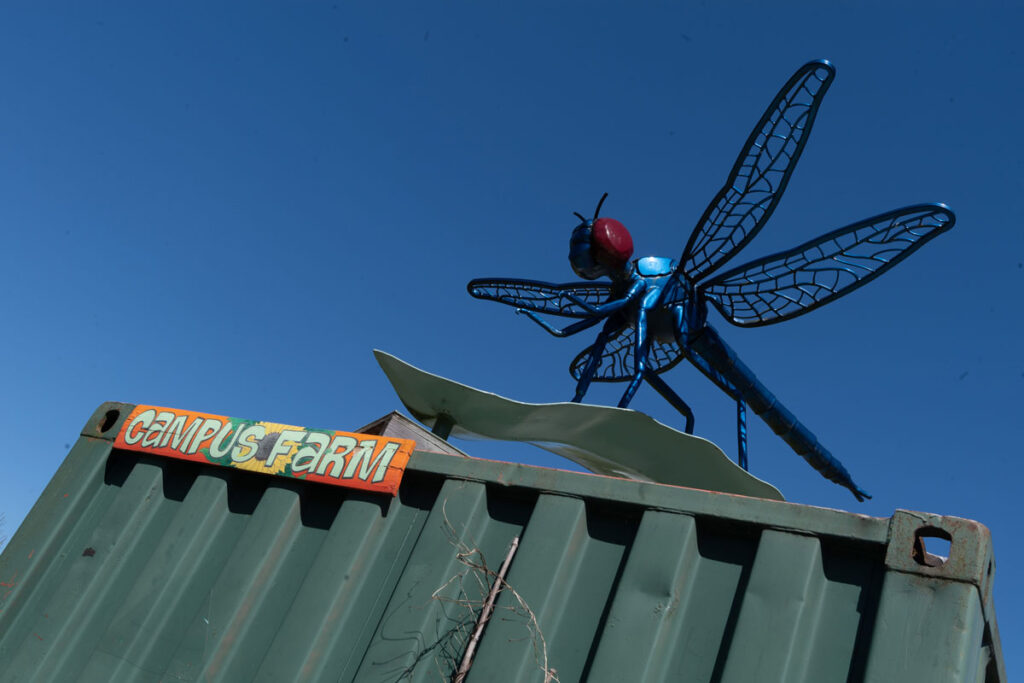
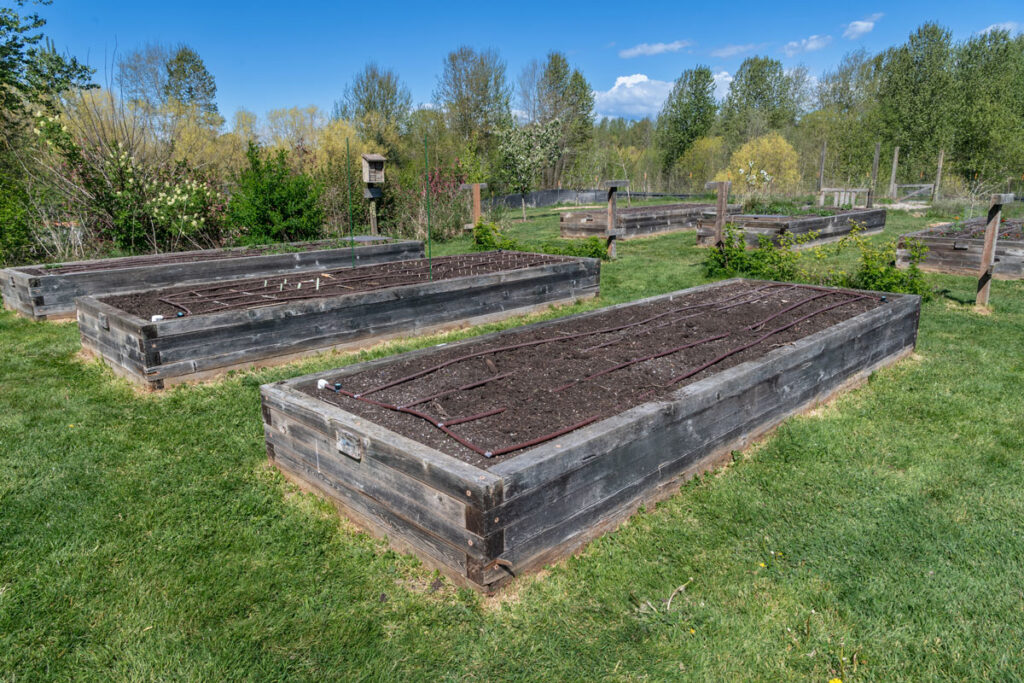
Supporting nonhuman species
Some students in the course chose to work on case studies; yet others selected projects to support local community partners. For Callee Gray, a junior majoring in Media & Communication Studies, a case study on pollinators morphed into a community partner project.
“I have a passion for pollinators,” she said. “The connections I made in this class have led me to reserve a garden plot at the Campus Farm and create a pollinator pod under the mason bee house for all to enjoy.”
Gray’s project is supported by several partners she encountered while doing her case study, including Pollinator Pathway NW, Xerces Society and Crown Bees.
“The quick and easy discovery of connections on and off the UW Bothell campus — and within the local community — surprised me at first,” Gray said. “It is a consolation to know there are possible answers to the current global warming crisis. I learned of these possibilities in this class.”
For his community partner project, Damahn Sterling, a junior Interdisciplinary Studies major, teamed up with a fellow classmate and Beavers Northwest, a nonprofit that aims to increase acceptance and understanding of beavers to support healthy, resilient ecosystems.
The two students created brochures and handouts about the practice known as “tree wrapping” that can protect trees from beavers. Sterling said this work promoted public awareness of the practice and was a learning opportunity for him.
“I did not know that tree wrapping was a tool to prevent beavers from breaking down trees,” Sterling said. “We also talked about the benefits of beavers to the environment and gave suggestions on the tree species that will grow back faster than others.”
Maintaining a sustainable campus
Among the community organizations students chose to collaborate with was a partner close to home — the Office of Campus Sustainability.
Students supported its sustainability efforts across the campus, from a Climate Author Night featuring Madeline Ostrander (author of “At Home on an Unruly Planet”) to a miniseries about environmental justice for the student-produced podcast called “Common Caws for Sustainability.”
They also helped develop ideas and activities for Earth Month — including Earth Month Bingo, created and designed by Xuan Bui.
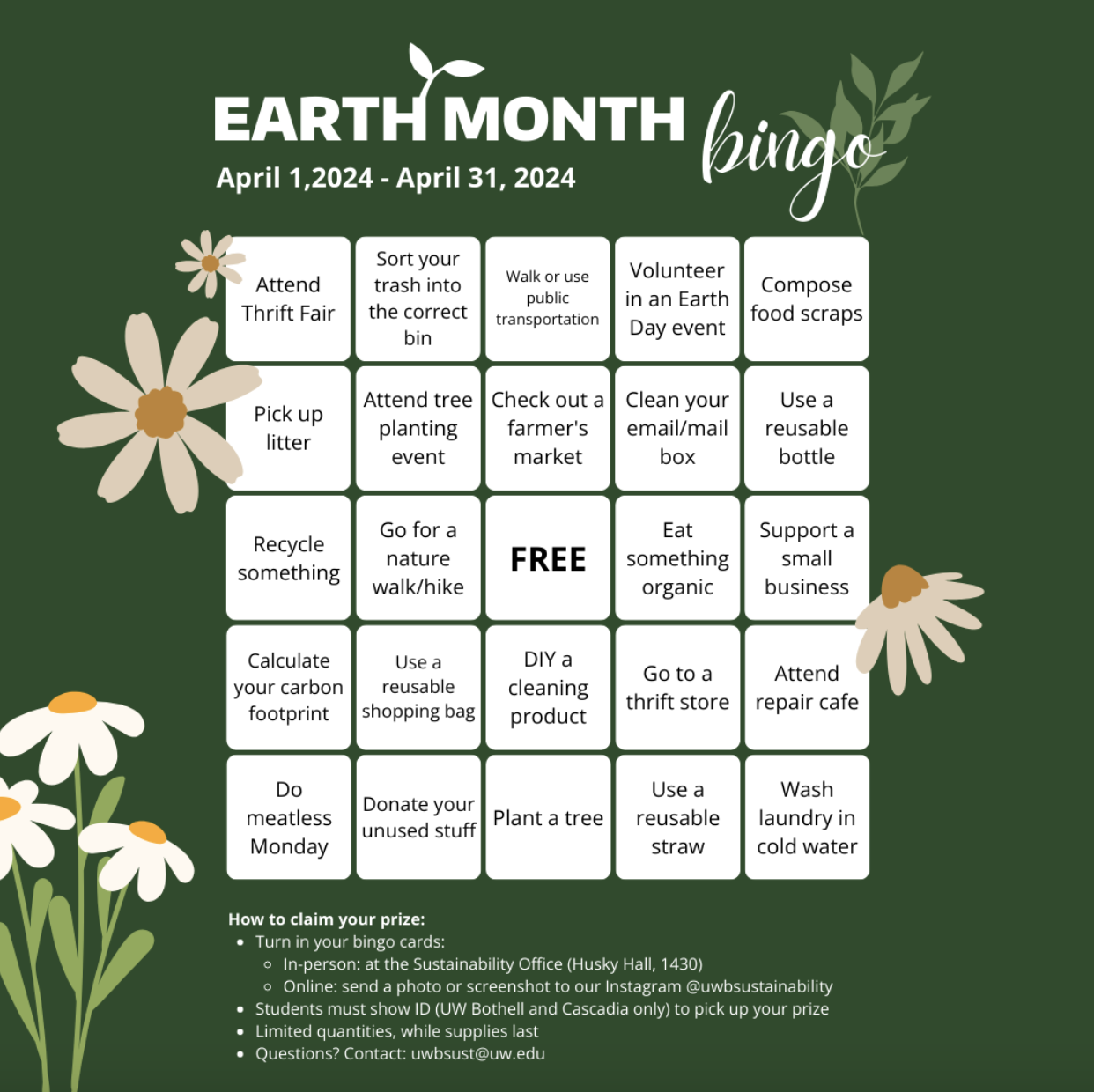
“The theme of bringing sustainability closer to home resonated deeply with me, aligning with the ethos of encouraging small yet impactful sustainable practices among students,” Bui said. “By teaching and involving students in sustainability, this project sparked increased knowledge and action among campus community members.”
In her work with the campus grounds team, Necia Marte, a senior majoring in Community Psychology and minoring in Health Studies, got practical experience removing invasive species such as English Ivy and Himalayan blackberries and planting a variety of vegetables and herbs in the Campus Farm and garden beds.
Marte also created a social media campaign to promote the campus garden beds that are available for use by students, faculty and staff. This campaign was a success, as they received more requests to adopt a farm bed than any previous year, reported Shahrzad Tehrani, sustainability coordinator.
“This project allowed me to continue to develop my critical reasoning skills in relation to current and historical issues regarding marginalized people accessing greenspaces” Marte said, “and allowed me the chance to try and bridge a small gap on campus.”
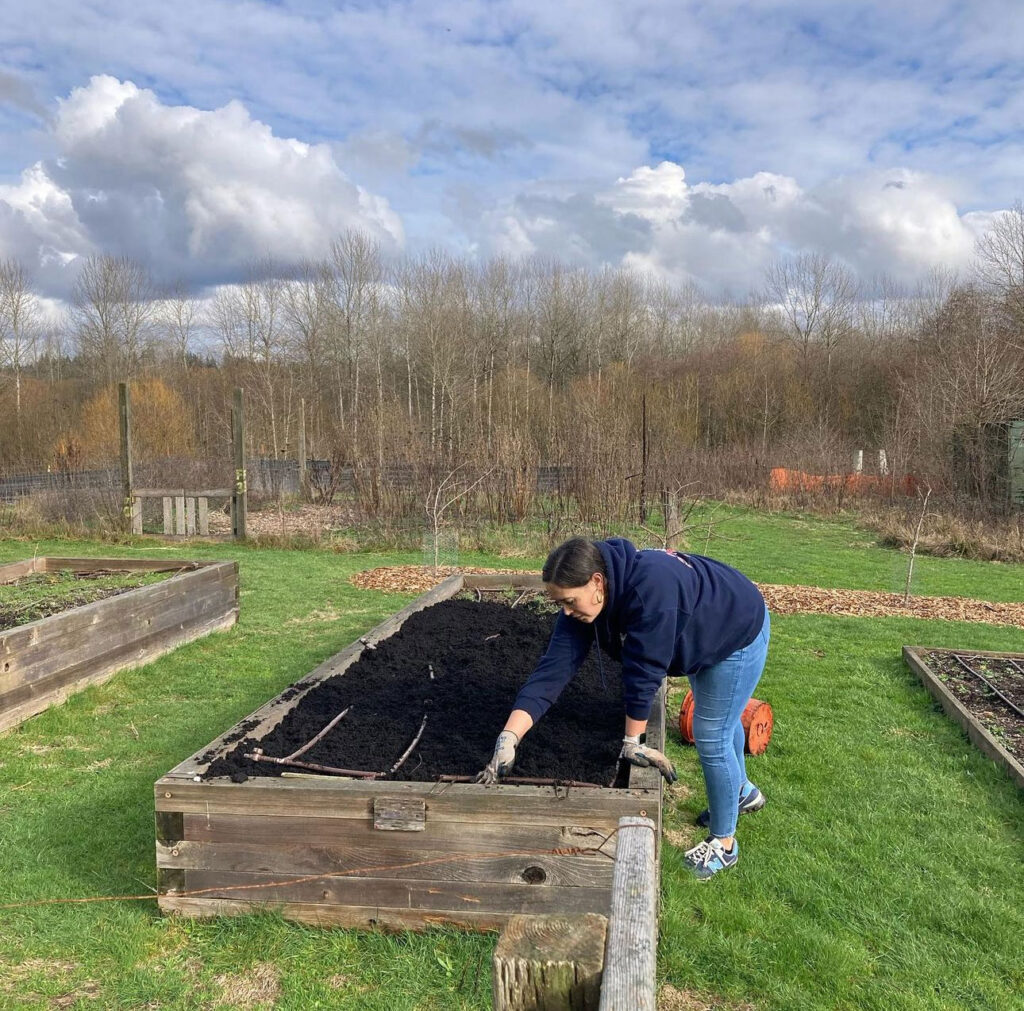
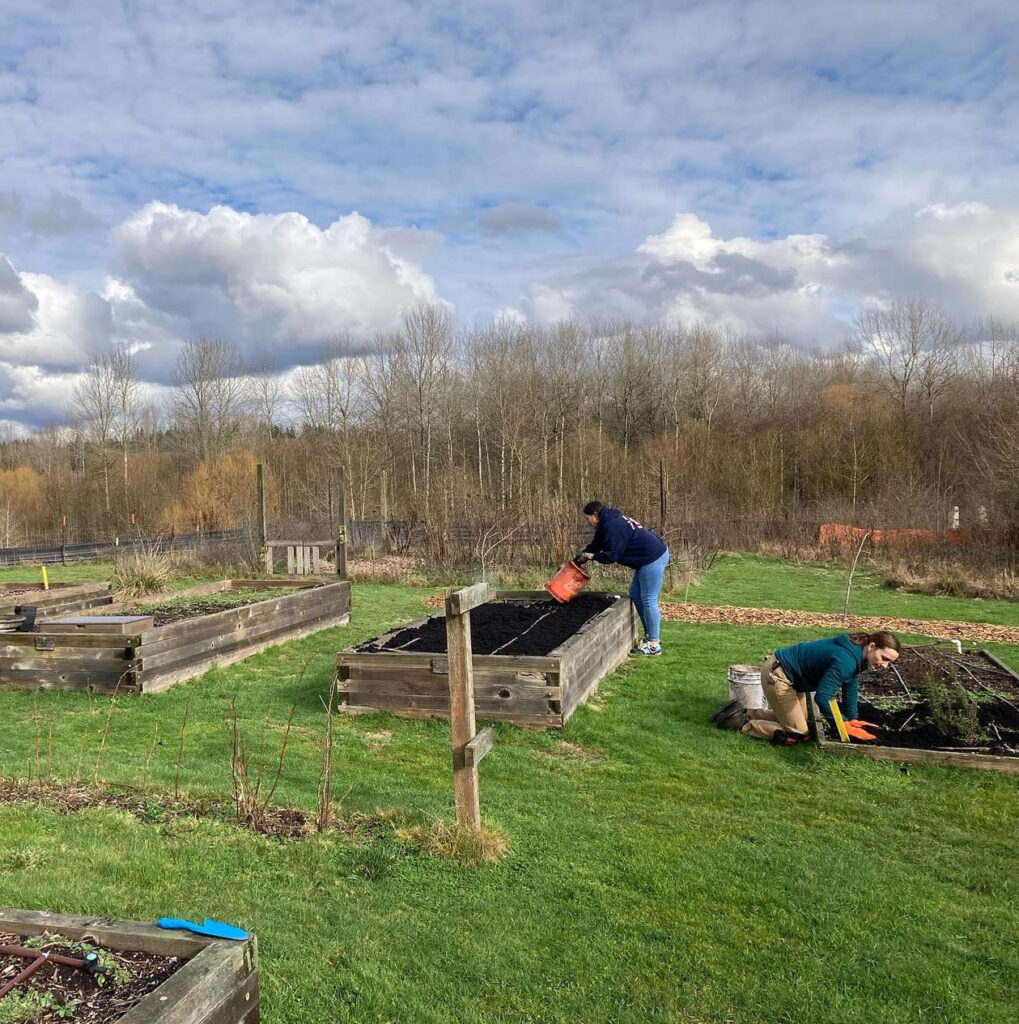
Creating a better future
“We believe there’s a real benefit from engaging in palpable projects in your own community,” Tehrani said. “All the students dedicated their time and skills to a certain project on campus, and I hope they’re proud when they see their work coming to life in their community.”
By ending the course with a project that gives students an opportunity to be active participants in creating a more sustainable future, Groom said she hopes they are left feeling optimistic and empowered to help create it.
“It’s really easy to get depressed and to think that we’re doomed, but there is actually so much good that’s being done and that has been done,” Groom said.
“I want folks to have a ton of examples in their minds and to feel really agentic about what they could do and help enact similar projects in the future.”
During Earth Month, check out these campus events and resources:
Earth Month Fair, April 23, 11:30 a.m.-2 p.m. at the Plaza: The campus community is invited to enjoy free thrifting, music, snacks and interactive booths.
Husky Highlights Talk and BioBlitz Kick-off, April 23, 3:30-5 p.m. in the Campus Library: Dr. Ursula Valdez will give a talk on Avian communities in the North Creek Wetland. She will also provide information about the BioBlitz event happening April 23-29 in which participants are encouraged to document biodiversity on campus and in urban areas.
Looking to get involved in campus sustainability?
UW Bothell’s Office of Sustainability is always looking for students interested in projects like those above. Students select from a list of projects to work on for a class or design their own projects. To learn more, email uwbsust@uw.edu with ideas and the skills you want to build.

